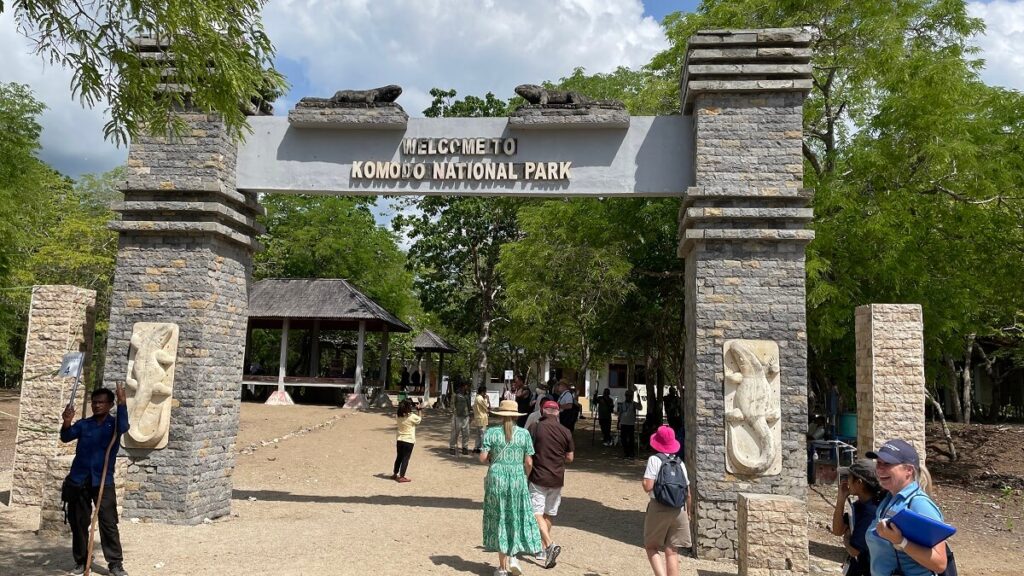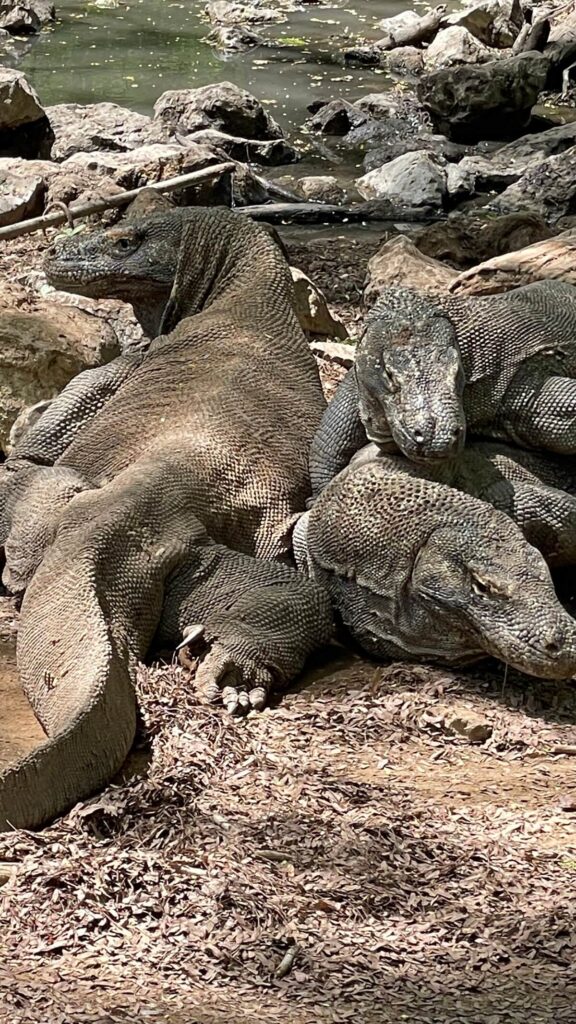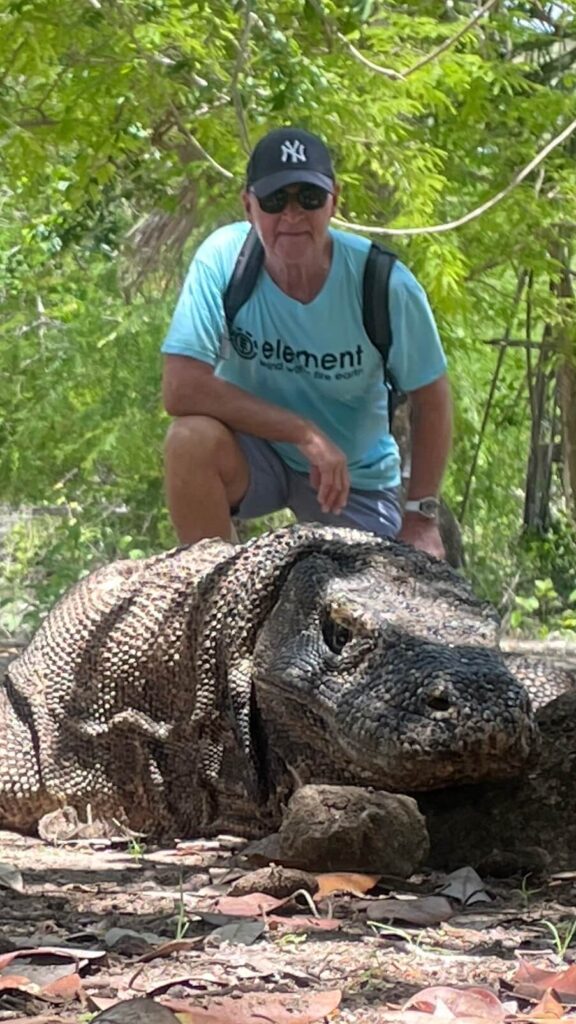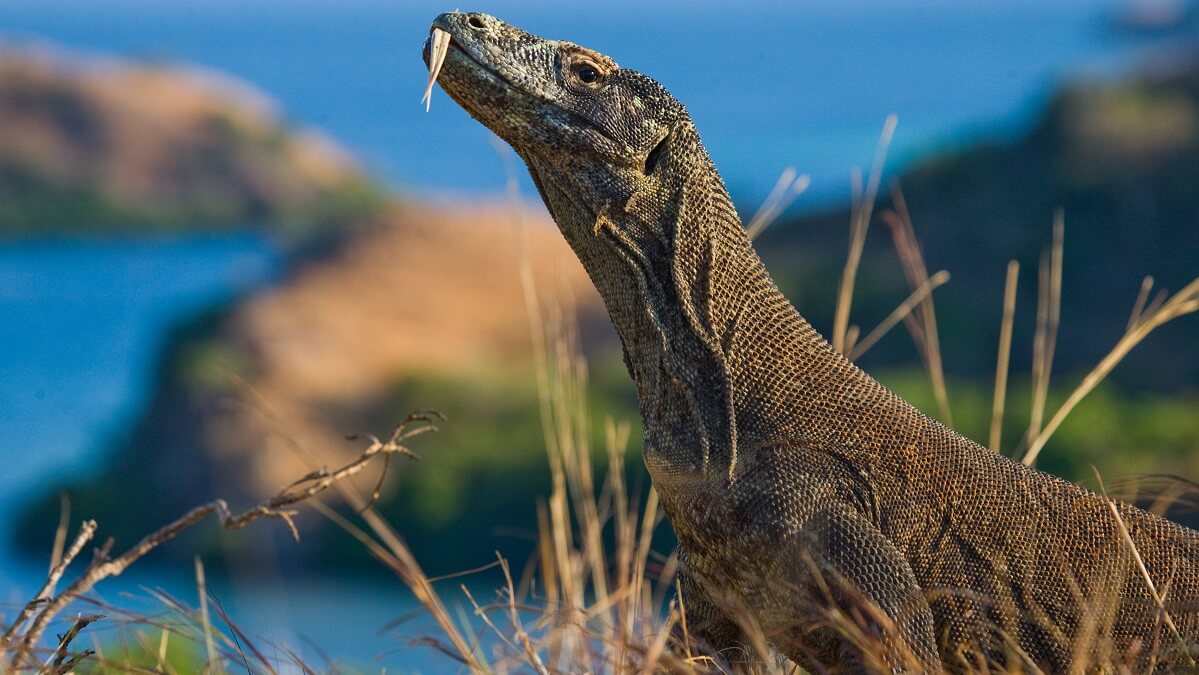The heat and humidity are draining as we negotiate this tropical island track in search of a dragon. Our guide points ahead, turns and motions for us to be quiet. We move slowly forward and are in awe of what we see. There in front of us, lazing near a water source, are three giant lizards commonly known as Komodo dragons.

We are on the island of Komodo, a UNESCO World Heritage Site and one of 17,508 Indonesian islands. The Komodo National Park, covering an area of about 220,000 hectares, was established in 1980 to protect its iconic inhabitants from extinction. It is estimated that the park’s dragon population is 5700, on three major islands, numerous smaller ones, and parts of Flores. The park mostly has a dry climate with some rain in the wet season between December and February. Komodo island is made up of rugged volcanic hillsides, contrasting vegetation types and sandy beaches.
Read: Weird and wonderful animals from around the world
On our Oceania Cruise from Darwin to Singapore, the Komodo Dragon tour is one of the highlight land excursions offered. It is mid-November, the hottest month of the year here, and besides being hot it is humid and oppressive. The sweat rolls down our foreheads and backs on this tour. This discomfort will be short lived, whilst the memory of a sighting will be with us forever.
Weather wise, mid-year may be a more comfortable time to visit this island. The locals are overjoyed that tourists are coming to the island once more – ours is the first cruise to this island since pre-COVID days. You can get here with a two- to three-hour boat ride from Labuan Bajo in western Flores or select a cruise with an itinerary that includes this excursion.
Read: How to see the real Bali
These aggressive creatures evolved 40 million years ago in Asia and are members of the lizard family. The males can grow to three metres and weigh up to 90kg – the females are somewhat smaller. They can live up to 40 years of age. They are carnivores and mainly eat carrion, young dragons (yes, they are cannibalistic), deer, boar, water buffalo, and may raid shallow graves and eat the rotting flesh of human corpses. When sufficiently aggravated, they have been known to attack humans, some fatally.

I’ll give you the heads up – they are fast over land and sea, and can outrun a human.
Don’t get bitten by one of these creatures – you will only last about five hours. Their glands secrete several toxic proteins that can result in paralysis, shock, loss of blood, loss of consciousness and eventual death, which is the kill process for hunted prey. They use their tongues to sense taste and smell and can detect carrion 5–10km away. They make an intimidating and chilling hissing sound to ward off other dragons.
Males fight each other for dominance and flick their long yellow forked tongue at a female to determine her receptivity to mate. She will lash out with her tail and sharp saw-like teeth during courtship, and the male must restrain her during copulation for fear of injury. Oh my gosh!
The female lays up to 20 eggs in a self-dug nest, which is about 2.5m deep. Incubation lasts about eight months. After birth, the young dragons retreat up trees for a few years to protect themselves against their cannibalistic parents, particularly their mum, and other predators.
We are near to the finish of this 2.5km loop track. Our guide holds up his hand and signals that there is something ahead. He bobs down and slowly creeps forward, with us following. Another dragon? Yes, it is. This male dragon is huge and even as we approach, it doesn’t move. The guide takes setup photos of us with the dragon using good photographic skills. I wonder how many times he has performed this task.

Cynically, I get the feeling that this dragon is an old timer and a seasoned photo bomber! If this is a way to enhance tourism on the island, then I’m all for it. For the locals, this is their livelihood, and for us tourists, we see something unique – a win-win outcome.
Read: Weird and wonderful facts about bearded dragons
Despite my cynicism, this land excursion was truly a mind-blowing experience, and just seeing these creatures in their natural habitat was awesome. The two to three hours on the island was certainly worthwhile and will surely create long-lasting memories. If you get the opportunity to visit Komodo island, then take it. You will have no regrets.
Max Williams was a guest of Oceania Cruises.
Have you ever visited Komodo island? Would you like to see these magnificent creatures up close? Let us know in the comments section below.

